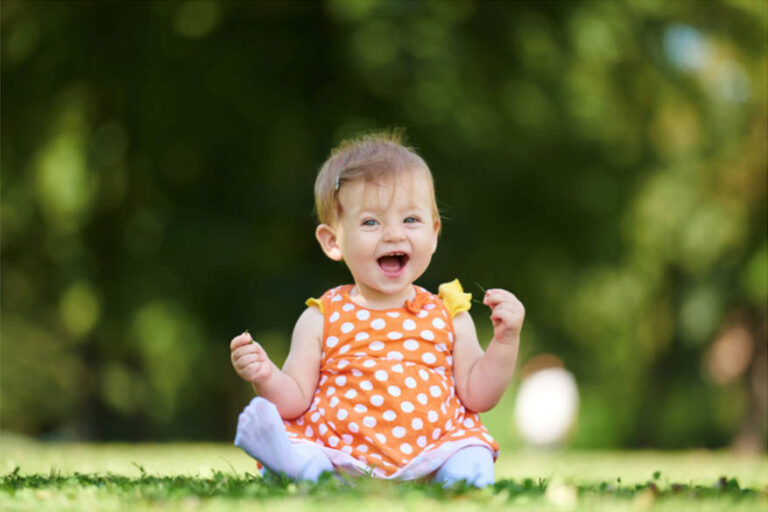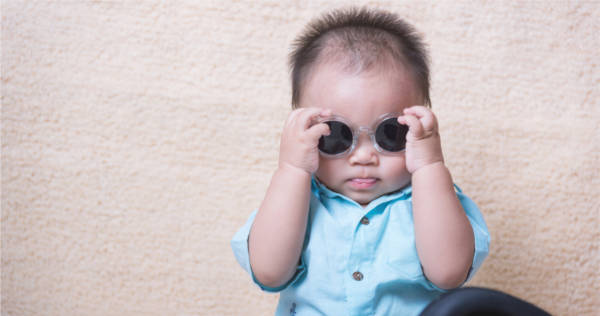In the summer months, children and babies enjoy being outside in the warm and sunny weather. Your nursery practitioners must be aware of the hidden dangers the summer months bring in the UK.
In 2022, over 2083 people died from heat-related illnesses. Young children and babies struggle to regulate their temperature in warmer conditions, making sun safety for children crucial.
We share how to spot the signs of heat exhaustion and heat stroke in children and babies.

What causes heatstroke in children?
Babies and young children are more prone to heat-related illnesses like heat exhaustion and heatstroke along with heat rash (known as prickly heat) because their bodies are less prepared to adapt to changes in temperature.
Heat exhaustion and heatstroke occur when a child becomes dehydrated due to spending too much time in warm conditions. It is important to note that heat-related illnesses do not require direct sunlight – warm weather conditions (both inside and outside) can cause heatstroke in children and babies.
Heat-related illnesses for children and babies
There are a number of different heat-related illnesses that can affect young children and babies.
What is the difference between heat exhaustion and heatstroke?
In short, heat exhaustion is the beginning of heatstroke. If left untreated, heat exhaustion can quickly become heatstroke (or sunstroke). As practitioners, you will aim to prevent heat-related illnesses through careful planning and good team communication.

What are the signs of heat exhaustion in children and babies?
Here are some signs a child may be experiencing heat exhaustion:
- Tiredness
- Dizziness
- Complaining of a headache
- Feeling sick or being sick
- Excessive sweating or feeling clammy
- A heat rash (this is more difficult to spot on brown and black skin)
- Skin becoming paler than usual
- Cramps in arms, legs or stomach
- Increase in breathing and heart rate
- A temperature
- Goosebumps
- Excessively thirsty
- Feeling weak

How to treat heat exhaustion in kids
To treat heat exhaustion in babies and children, you have to act fast. The main aim must be to cool the child down and give them fluids to hydrate. Heat exhaustion does not usually require emergency medical treatment if the child cools down within 30 minutes.
If you or one of your practitioners are concerned, you can call 111 for immediate advice.
There are lots of ways you can cool children down if they become too warm:
- Sit them in the shade (inside if the temperature is cooler there)
- Wear only necessary clothing (remove any tight clothing)
- Give them fluids (cooled water if the child is eating solid foods. If they are still breastfeeding or having formula, then more milk should be given)
- Cool their skin by placing a damp cloth or sponge on warm places like the forehead, neck and under the arms.

Remember to record all events on their daily diary and communicate with your team to ensure all staff are aware and to look out for any persisting symptoms throughout the day. Stay with the child until you are confident they have cooled enough and show no further or continuing symptoms.
Signs and symptoms of heatstroke in children and babies
The signs of heatstroke (or sunstroke) in children and babies can be worrying – they can deteriorate quickly and require immediate emergency medical attention.
Heatstroke signs to look out for in children and babies:
- Persisting heat exhaustion symptoms after 30 minutes of trying to cool them down
- A high temperature
- Excessive sweating, or no sweating but very hot skin (skin may also look red – this can be difficult to spot on dark skin)
- Rapid breathing and heart rate
- Confusion or lack of coordination
- Loss of consciousness
- A seizure or fit
What to do if a child has heatstroke in nursery
If the child shows any of the above symptoms for heat exhaustion, you can get immediate advice from 111. If a child continues heat exhaustion symptoms and worsens, place them into the recovery position and call 999 for emergency medical treatment.
You should keep parents informed of the child’s condition – the priority is to ensure they receive prompt medical treatment.

How to prevent heatstroke in babies and toddlers
During hot weather or activities that involve high levels of exercise, it is essential to prevent children from overheating through careful preparation and vigilant observations.
To prevent heatstroke in babies and children, you can:
- Increase the amount of liquid they drink
- Give toddlers ice lollies with frozen water and a tiny amount of fresh juice (remember, diluted juices and smoothies aren’t recommended for children under the age of 5 due to the risks of tooth decay)
- Ensure the children wear light and loose clothing (it can be helpful to remind parents via your Parent App the morning of a forecasted warm day)
- Avoid direct sunlight from 11 am to 3 pm (find more sun safety tips here)
- Close the curtains and use a fan to keep the inside cooler than the outside
Top Tip: Share the child’s profiles with all staff members, highlighting any existing health conditions that could make them more vulnerable to heat-related illnesses, such as diabetes, heart conditions, medication use, or being overweight or obese.